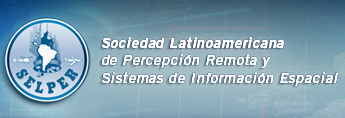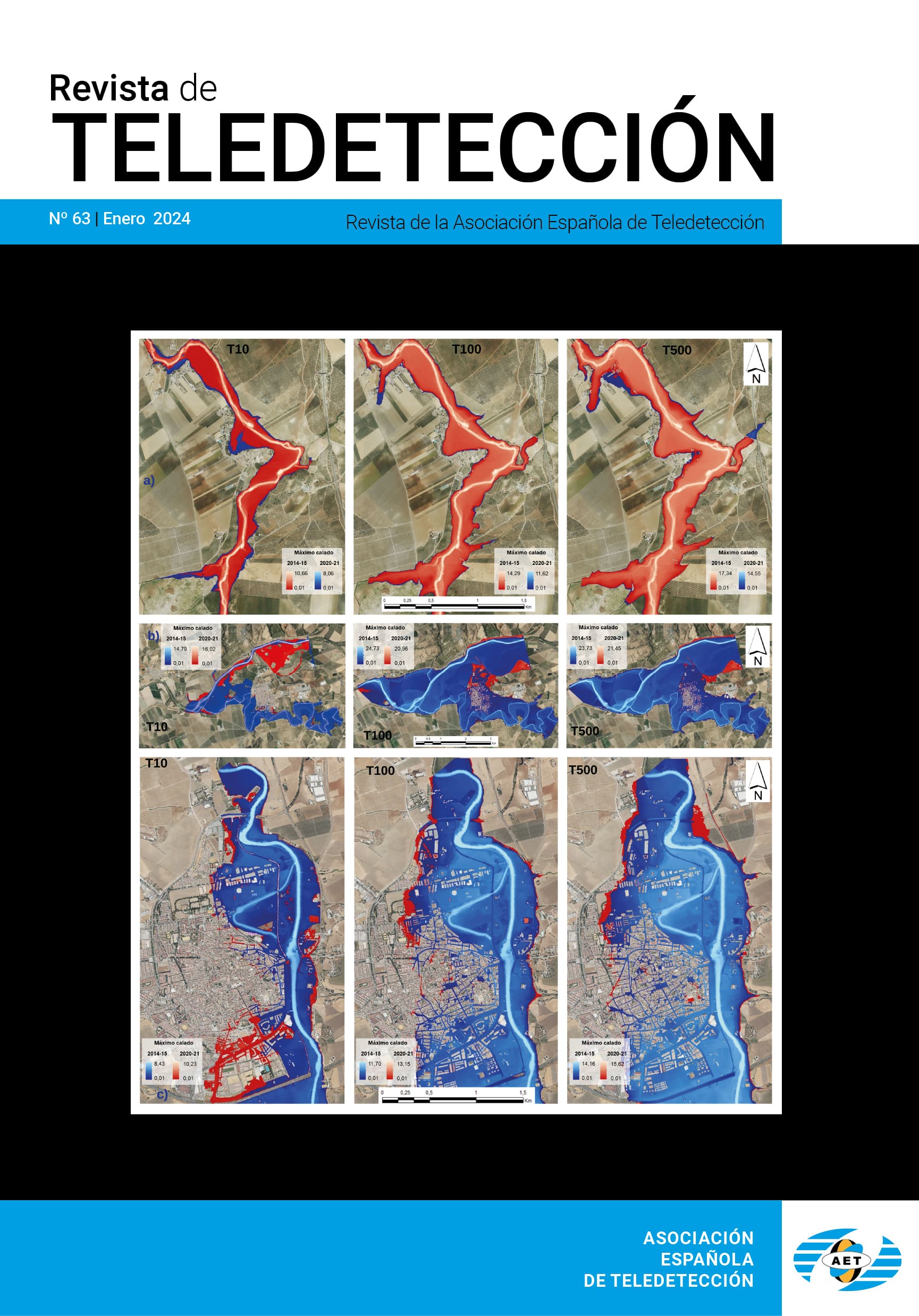Evaluación de distintos métodos de medida de la irradiancia atmosférica descendente en el infrarrojo térmico
V. García-Santos (vicente.garcia-santos@uv.es)
E. Valor, M. Mira, C. Coll, J. M. Galve y V. Caselles
RESUMEN
La medida de la temperatura de la superficie terrestre (TST) a nivel de suelo es necesaria para la validación de los productos TST obtenidos mediante teledetección en el infrarrojo térmico (IRT). En
las campañas de validación, un factor importante a tener en cuenta, es la irradiancia atmosférica descendente (Fsky), la cual se ha de medir casi simultáneamente a las medidas de superficie. Fsky es un parámetro clave para eliminar la radiancia, de atmósfera y alrededores, reflejada en la superficie de la medida sobre ésta. La forma correcta de medir Fsky seria realizando medidas directas del cielo para todos los ángulos cenitales y acimutales, integrando luego estas medidas en el hemisferio superior. Como realizar estas medidas resulta un arduo trabajo, consumiendo una gran cantidad de tiempo, resulta un método poco útil, debido al continuo cambio de las condiciones atmosféricas durante el proceso de medida. En este estudio se comparan varios métodos capaces de determinar, de forma precisa, Fsky en un corto periodo de tiempo, evaluando así cuál de ellos es el más conveniente. Con este objetivo se llevó a cabo una campaña experimental, usando radiómetros térmicos multiespectrales modelo CIMEL Electronique CE312, los cuales tiene cuatro bandas espectrales situadas en la el intervalo 8-14 μm. Se realizaron medidas directas de Fsky según el método de aproximación difusiva, el cuál estipula que Fsky es proporcional a la radiancia, procedente del cielo, medida en un determinado ángulo cenital
efectivo que se sitúa en torno a los 53°. Otro método implica el uso de un panel de reflectividad difusa en el IRT. También se incluyeron, para su comparación, valores simulados de Fsky mediante un modelo de transferencia radiativa utilizando como datos de entrada a éste, radiosondeos realizados en la zona de estudio y perfiles atmosféricos obtenidos del National Center for Environment Prediction. Los resultados muestran una gran similitud entre todas las técnicas propuestas aquí, pudiéndose explicar las posibles diferencias entre éstas en términos de sus errores. No obstante si hubiera que decantarse por una de las técnicas, ésta implicaría el uso del panel de reflectividad difusa, pues tiene en cuenta la contribución de elementos circundantes como pueden ser, inevitablemente, el experimentador y su instrumental. Además puede ser usado bajo cualquier condición atmosférica, aspecto que excluye al resto de los métodos para el caso de cielos parcialmente cubiertos. Utilizar el panel supone cometer un error promedio de precisión, en términos de radiancia, de ±1,5 mW m–2 sr–1 cm, equivalente en términos de temperatura atmosférica de ±1,9 K.
PALABRAS CLAVE: infrarrojo térmico, irradiancia atmosférica descendente, panel de reflectividad difusa,
temperatura de la superficie terrestre, radiometría de campo.
ABSTRACT
Ground measurements of land surface temperature (LST) are necessary for the validation of LST products derived from thermal infrared (TIR) remote sensing data. In the validation campaigns, one important factor to take into account is the downwelling atmospheric irradiance (Fsky), which has to be measured near-simultaneously to the surface temperature measurements. Fsky is a key parameter for removing the radiance, both of atmosphere and surrounding, reflected at the surface from the radiance measured at ground level. Direct measurements of Fsky with a radiometer involve the measurement of sky radiances from all zenithal and azimuthal directions, and the integration over the upper hemisphere. Such measurements are time-consuming and are not useful because atmospheric conditions may change during the measurement process. Several methods to accurately determine Fsky in a short period of time are analyzed in this paper to evaluate which is the most suitable. With this aim, an experimental campaign was carried out using thermal radiometers CIMEL Electronique model CE312, which have four spectral bands in the 8-14 μm spectral window. One method for the determination of Fsky is the use of the diffusive approximation, which states that Fsky is proportional to the sky radiance measured at a given zenithal angle (~54°). Another method implies the use of a TIR diffuse reflectance panel.
For comparison, Fsky values were simulated by means of a radiative transfer code using both radiosounding data measured at the study area, and atmospheric profiles from the National Center for Environment Prediction. Results show a great similitude between all the techniques proposed here, the possible difference between them could be explained in terms of their errors. Nevertheless the most recommended technique is the diffuse reflectance panel since takes into account the contribution of surrounding elements like the experimenter or his instrumental. Moreover the panel could be used under any atmospheric condition, aspect which excludes the rest methods in the case of skies partially cloudy. Using the panel suppose make an average error, in the terms of radiance, of ±1.5 mW m–2 sr–1 cm, equivalent in terms of atmospheric temperature of ±1.9 K.
KEYWORDS: thermal infrared, downwelling atmospheric irradiance, diffuse reflectance panel, land
surface temperature, field radiometry.
PULSE AQUI PARA DESCARGAR EL ARTÍCULO COMPLETO








